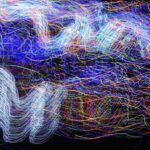A learned association between two stimuli.S-S associations are commonly formed when we learn to use one stimulus as a cue to another. For example, when we construct a mental map of a given neighborhood, we note that a right turn at a certain comer will lead to the drugstore but a left turn will take us to the post office. The S-S associations will therefore be right turn—drugstore,left turn—post office. Such learning comes about by exploring the area, and during this process the comer acquires a new quality: it becomes a sign or signal that a new stimulus (drugstore or post office) can be reached by making the appropriate turn. Once we learn these associations, we find it easy to get our bearings and arrive at the destination we want.S-S associations are found throughout our experience. We establish them when we learn to associate a face with a name, a theory with its originator, or one word with another in a familiar quotation. The general idea was first proposed by the associationist philosophers John Locke and David Hume in the eighteenth century. They described these associations in terms of ideas or images in the mind—for instance, turning to the right gives rise to the idea of drugstore—and they formulated many principles which govern the formation of these associations.Many of these principles, such as the law of contiguity (events close together tend to be associated) remain in use today, but more recent investigators of learning do not put so much emphasis on ideas and images, since they are hard to define and cannot be tested in the laboratory. For these reasons E. C. Tolman conceived associations in terms of stimuli, and applied the term “expectancy theory” to his concept of learning. This term fittingly describes the experience: we expect to see the drugstore if we turn to the right, and we expect to see a certain man if we hear his name called.












